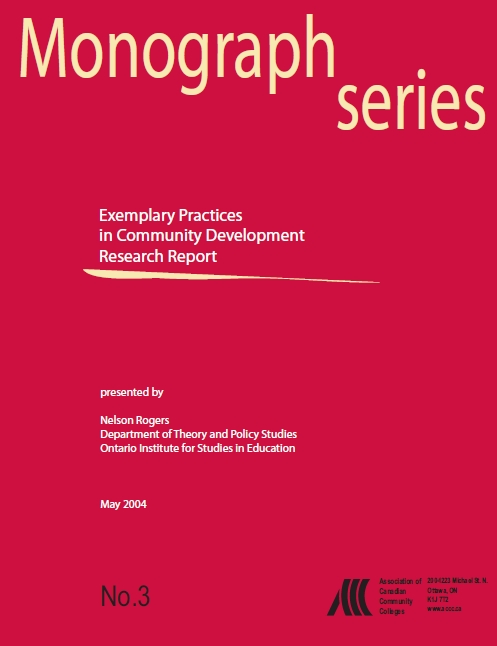What does a typical project look like that is considered by college staff to be an exemplary practice in community development in a rural or remote community? Based on the projects submitted to ACCC, a composite exemplary project would include a response to a local need (usually a social or economic problem) identified through consultations between a college and a number of local groups and agencies.As the college and these groups agreed to work together to locate funding from a government department or agency and operate a program, the college would create or modify the content or delivery of an adult education or vocational training program to suit the local situation. Usually the target population would be the unemployed or underemployed, and would often be facing other barriers due to the marginalization of women, the rural poor or Aboriginal groups.
A review of the projects revealed that they tended to fall into five main categories, and frequently displayed the features of more than one category. Projects were typically local variations of college education or training programs, an adaptation of adult education or literacy programs, a partnership with local organizations or agencies (usually including a government department), or an arrangement with a corporate partner or employer group. In a small number of cases, the project was unique, unusual or simply difficult to classify.
A related focus of the study was to look at the evaluation of college involvement in community
development, that is, how evaluation was undertaken and what was learned. However, when it came to the tracking or measuring of college impact on community development, there was very little to examine. Most respondents reported that no attempt was made to systematically record results, although many indicated that they attempted to pay attention to informal feedback. When evaluations were conducted, they were usually done by other agencies (often the government department providing the funding), or were part of an assessment of college academic programs, and did not provide useful information for the improvement of the community development aspect of the project.
Table of contents
Introduction
- Chapter 1. Who we are? Why we here?- Community Colleges in Canada – History and Functions
- Chapter 2. What’s Happening? College involving in community development in rural and remote communities
- Chapter 3. How good is it? And how woud we know? Evaluating college impact on community development.
- Chapter 4. What Now? Recommendations and next steps





